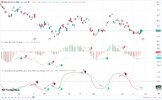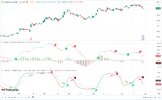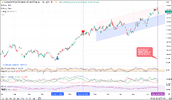- Joined
- 12 January 2008
- Posts
- 7,397
- Reactions
- 18,493
Trading the leading stocks on the ASX presents unique challenges
The first challenge is to recognise and deal with the fact that these stocks are highly correlated to the movement of the main index.
The second challenge is to be in sync with the rotation of demand that flows between these stocks. Currently of the top20 only 8 are going up while the others are falling or flat. The challenge is holding the ones that are going up most of the time as they will be different throughout the year.








